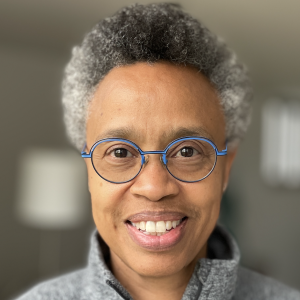RALEIGH, N.C. — The state’s highest civilian honor, the North Carolina Award, will be presented to six distinguished North Carolinians Thursday, Nov. 9, at the North Carolina Museum of Art. Governor Roy Cooper will present the awards.
The award was created by the General Assembly in 1961 to recognize significant contributions to the state and nation in the fields of fine arts, literature, public service and science.
The 2023 honorees are Honorable David Price for Public Service, Honorable G.K. Butterfield for Public Service, Fred A. Whitfield for Public Service, Marsha White Warren for Literature, Patrick Dougherty for Fine Arts and Mandy K. Cohen, M.D., M.P.H., for Science.
“These individuals have contributed so much to our state and nation thanks to their remarkable careers and achievements,” said Reid Wilson, secretary of the N.C. Department of Natural and Cultural Resources. “Each of them has enhanced the lives of North Carolinians through their impressive accomplishments in public service, literature, science, and the arts.”
Since the award’s inception, more than 250 notable men and women have been honored by the state of North Carolina. Past recipients include Selma Burke, William Friday, James Taylor, Etta Baker, Charles Kuralt, Maya Angelou, Lee Smith and Branford Marsalis.
2023 Award Recipients:
Public Service: Honorable G.K. Butterfield
Born and raised in the heart of Wilson, N.C., G.K. Butterfield’s journey from a family rooted in service to a distinguished career in law, politics, and advocacy is a testament to his unwavering commitment to his community and the principles he holds dear. Butterfield completed high school in Wilson before earning both a bachelor’s degree and law degree from North Carolina Central University in Durham. In 1975, he founded a law practice in Wilson with partners Milton Fitch and Quentin Sumner. Butterfield was elected as Resident Superior Court judge in 1988 and later served briefly as Associate Justice of the North Carolina Supreme Court. In 2004, Butterfield was elected to the U.S. House of Representatives where he served until 2022. Throughout, he tirelessly represented the constituents of North Carolina’s 1st Congressional District. He served on the Energy and Commerce and House Administration committees, and chaired the Congressional Black Caucus from 2015-2017.
Science: Mandy K. Cohen, M.D., M.P.H.
Mandy K. Cohen is the director for the Centers for Disease Control and Prevention (CDC) and the administrator of the Agency for Toxic Substances and Disease Registry. She is one of the nation’s top health leaders with experience leading large and complex organizations, and a proven track record protecting Americans’ health and safety. Cohen, an internal medicine physician, led the North Carolina Department of Health and Human Services from 2017-21, where she was lauded for her outstanding leadership during the Covid crisis, focusing on equity, data accountability, and transparent communication. Prior to joining CDC, Cohen served as the executive vice president and CEO of Aledade Care Solutions, which helps independent primary care practices, health centers, and clinics deliver better care to their patients. Before joining NCDHHS, she served as chief operating officer and chief of staff of the Centers for Medicare and Medicaid Services and served as acting director of the Center for Consumer Information and Insurance Oversight.
Fine Arts: Patrick Dougherty
The internationally recognized sculptor Patrick Dougherty grew up in Southern Pines, North Carolina. After earning a bachelor’s degree in English from the University of North Carolina-Chapel Hill and a master’s degree in Hospital and Health Administration from the University of Iowa, he returned to UNC to study art history and sculpture. Combining his carpentry skills with his love of nature, Dougherty experimented with primitive building techniques using tree saplings as construction material. In 1982 his first work, “Maple Body Wrap,” was included in the North Carolina Biennial Artists’ Exhibition, sponsored by the North Carolina Museum of Art. His 2009 sculpture, “Out of the Box,” is now on permanent display at the museum. Dougherty has received numerous awards, including the 2011 Factor Prize for Southern Art, North Carolina Artist Fellowship Award, Pollock-Krasner Foundation Grant, Henry Moore Foundation Fellowship, and National Endowment for the Arts Fellowship.
Public Service: Honorable David E. Price
David E. Price has dedicated his life to public service, education, and diplomacy. He represented North Carolina’s 4th District, the Research Triangle region, in the U.S. House of Representatives from 1987-94 and 1997-2022. He was a senior member of the Appropriations Committee and chaired the Subcommittee on Transportation, Housing and Urban Development, and Related Agencies. He is a Polis Distinguished Fellow at the Sanford School of Public Policy, Duke University, and a Professor Emeritus of Political Science at Duke. Price’s dedication to public service and diplomacy earned him numerous awards and recognitions, including the Hubert H. Humphrey Award, induction to the National Service Hall of Fame, and the Charles Dick Medal of Merit. He currently serves on the state board of community colleges. Price is the author of four books and numerous articles on American politics and institutions, political thought, ethics, and foreign affairs.
Literature: Marsha White Warren
A skilled poet and storyteller, Marsha White Warren has spent most of her career using her gifts in service to other writers, as a charter member and executive director of the North Carolina Writers Network, an officer in the North Carolina Poetry Society, and board member of Arts Advocates. Her extensive contributions to the arts and humanities have earned her numerous awards, including the Sam Ragan Award for Contributions to the Fine Arts in North Carolina and the R. Hunt Parker Memorial Award for Lifetime Contributions to Literature from the North Carolina Literary and Historical Association. In 1991 she took on the directorship of the Paul Green Foundation, which makes grants to assist theatres, playwrights and social justice organizations around the country to uphold the ideals of the playwright and novelist Paul Green.
Public Service: Fred A. Whitfield
Fred A. Whitfield has built a distinguished sports executive career encompassing roles as a player, coach, agent, sports marketer, and basketball operations administrator. Since 2018, Whitfield has been president and vice chairman of Hornets Sports & Entertainment, after serving as president and chief operating officer since his arrival at what was then Bobcats Sports & Entertainment in July 2006. In this leadership position, Whitfield has overseen all business operations for the organization. His responsibilities also extend to managing Spectrum Center, the downtown Charlotte arena that has changed greatly under his guidance. Previously, he managed endorsements and sports marketing strategy at the Jordan Brand as director of Business and Legal Affairs. Whitfield founded HoopTee Charities, Inc., a North Carolina-based nonprofit providing scholarships for disadvantaged youth to attend camps and educational programs nationwide. He also established the Achievements Unlimited Basketball School, benefiting over 15,000 kids in Greensboro and Charlotte over the last 38 years.
The 2023 awards will be presented Thursday, Nov. 9 at the North Carolina Museum of Art. This event is sponsored by Wells Fargo, Martin Marietta, Duke Energy, RTI, O’Reilly Auto Parts, ACN, Inc., CBC/WRAL Community Fund of the Triangle Community Foundation, Dr. William Roper, the Charlotte Hornets, the National Basketball Association, and Lenovo.

